One vintage ad warns women, “Don’t let them call you SKINNY!” while another promises that smoking cigarettes will keep one slender. If the task of morphing their bodies into the current desirable shape isn’t enough of a burden, women are also reminded that they stink.
In these vintage ads, a woman may be emitting a foul odour from any body part — her armpits, her mouth, her hair, her hands, her lady parts — but she never knows it until her husband is walking out the door, suitcase in hand. And what about her skin? According to such ads, she might drive that man away with her so-called coarse pores, old mouth, tan lines, zits, wrinkles, middle-age skin, hairy legs or lip, visible veins, or horror of all horrors, dishpan hands.
The Do I Offend? blog chronicles such vintage body-shaming advertisements geared toward women, and the baffling shifts from one feminine ideal to the next. Cynthia Petrovic, a Southern California artist known as RedTango who designs and sells a retro-themed gift line, got hooked on these advertisements when she was in college. Now, she has a garage full of antique and vintage magazines, which she’s been slowly pilfering for the most sexist (and funniest) ads targeting women.
For the past couple years, she’s been uploading these ads to Do I Offend?, where she adds a snarky headline and sorts them into categories like “A Weighty Matter,” “Toilet Torment,” and “No Boob Left Behind.” We talked to Petrovic about her collection and what she’s learned about how the ad men on Madison Avenue have gotten rich selling women shame.
Collectors Weekly: When did this sort of advertisement begin?
Petrovic: The mass media that breeds insecurity in our culture started in the late 1800s with the spread of magazines. I’ve got ads going back to the 1890s, which offer a lot of contraptions to change your face. The Victorians were really into things that you strap on your face to lift your chin and reform your nose. Every age has its neurotic beauty fixations. They also wanted tight, little waists and the big butts formed by corsets, as well as long, beautiful hair.
In the late 19th century, magazines took over the advice and care of your family. As magazines were available to more and more people, you could read about what to buy, how to take care of your kids, what you should look like, and what you should be thinking and doing. People turned to the magazines to get information and form opinions about themselves. Suddenly strangers were telling people what they should look like, buy, and think. Today, that’s exploded with the Internet.
I noticed a fever pitch building up during the 1930s. By the late ’30s, the advertisers were on a roll. You open up any of these magazines now, and you burst out laughing. But during World War II, I would say about 80 per cent of those ads that manipulate you, the ones that say you stink or you’re not socially acceptable on some level, vanished.
Collectors Weekly: It’s amazing how many different ways you can smell bad.
Petrovic: Yeah, the advertisers got really creative with that in the 1930s. As a bonus, they’ve also instructed you on how to do the “armhole test” so that you can smell your own funk and determine whether you’re acceptable or not for a night out. Maybe people just didn’t wash as much — which brings me to my favourite ad.
This one is the prize, the reason why I collect these, a crowning achievement. Whoever thought it up in the ad department needs an award. A woman is in bed asleep, and her underthings are hanging on a chair nearby — slip, girdle, bra. And they’re whispering about her. They’re saying, “She would’ve been more popular if she had washed us” with the soap the ad is shilling. Literally, her underwear is gossiping about her. You can’t get more demented than that.
This article has been excerpted with permission from Collectors Weekly. To read in its entirety, head here.
Looking old was also a liability for a woman in the workforce.

This Lysol ad neatly catalogues all the expectations of good wives in the 1930s.
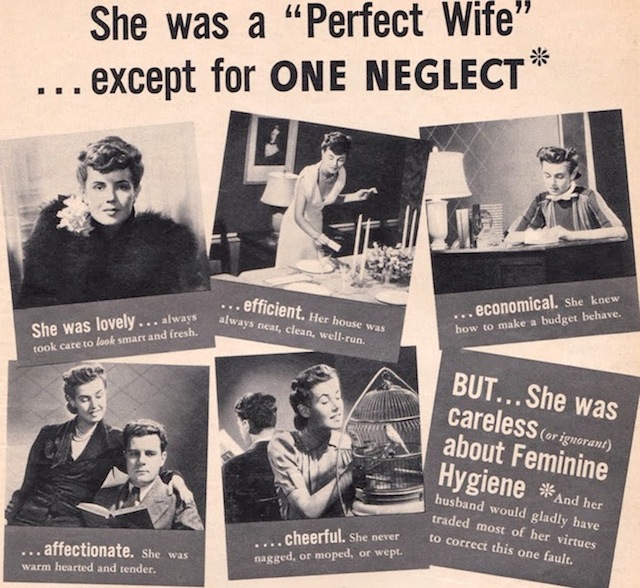
“Love, Romance, Popularity — all are attracted by feminine charm. And the outstanding charm of beautiful womanhood is a full, shapely bust.”
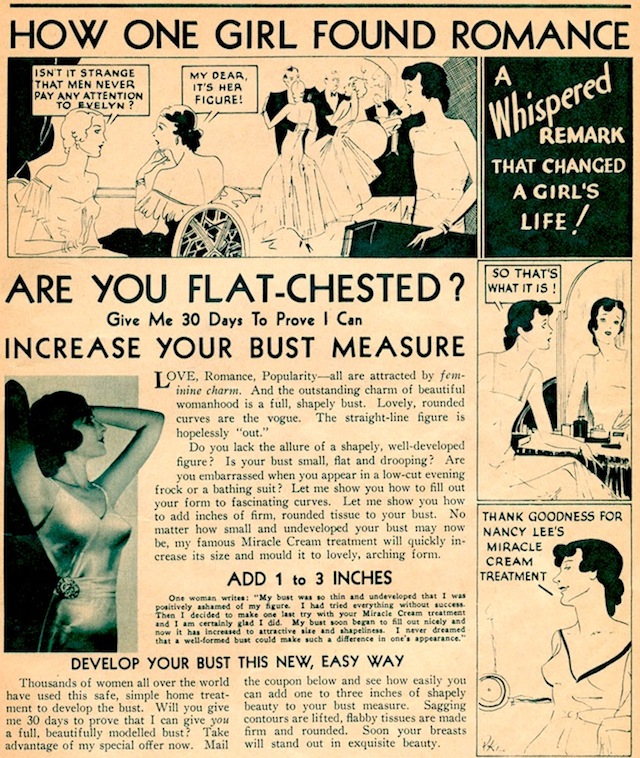
Given the pressures, you might understand why this woman with acne wants to hide.
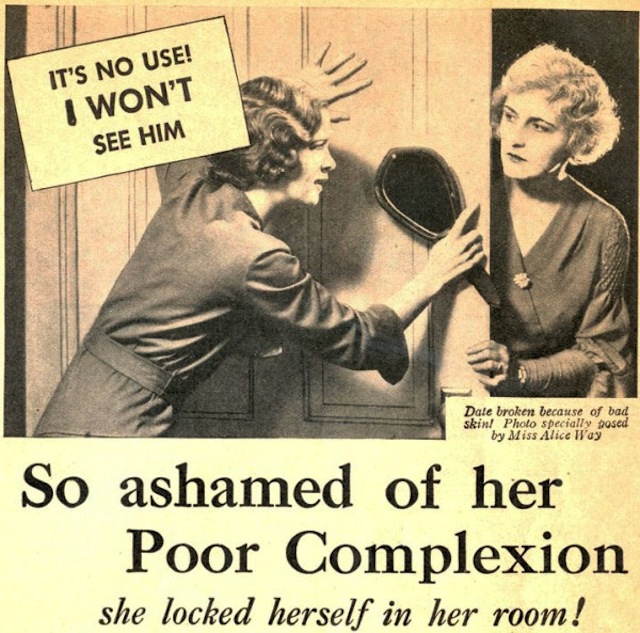
“Dishpan hands,” apparently, were such a serious matter that they could drive a woman to tears.

If you didn’t use the right soap or deodorant, ads warned, your girlfriends would gossip about you behind your back.

It was also emphasised that women on their periods should not make men suffer.

Somehow, this woman of 20 could lose her husband over her supposed “middle-age skin.”
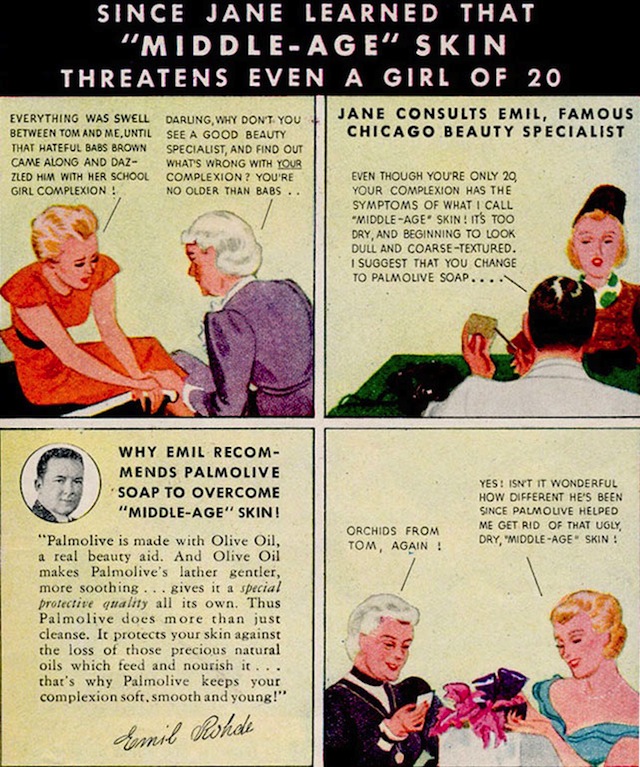
In this ad, a couple gossips about an “unloved” woman with a mustache.
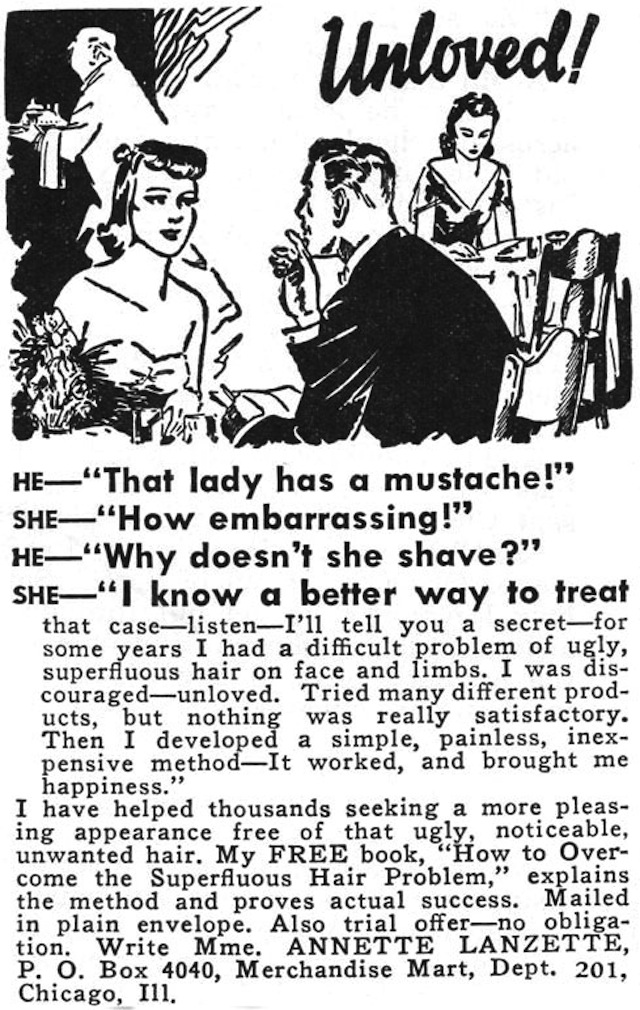
And if your husband encounters a younger-looking woman, forget it.
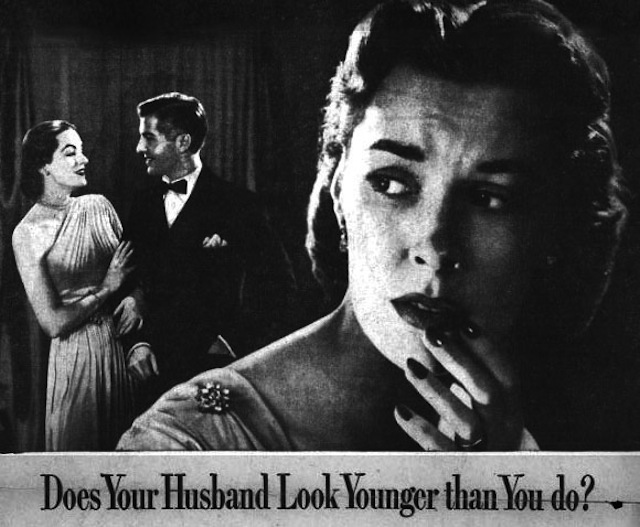
Ads in 19th century magazines sold devices to reshape one’s face.
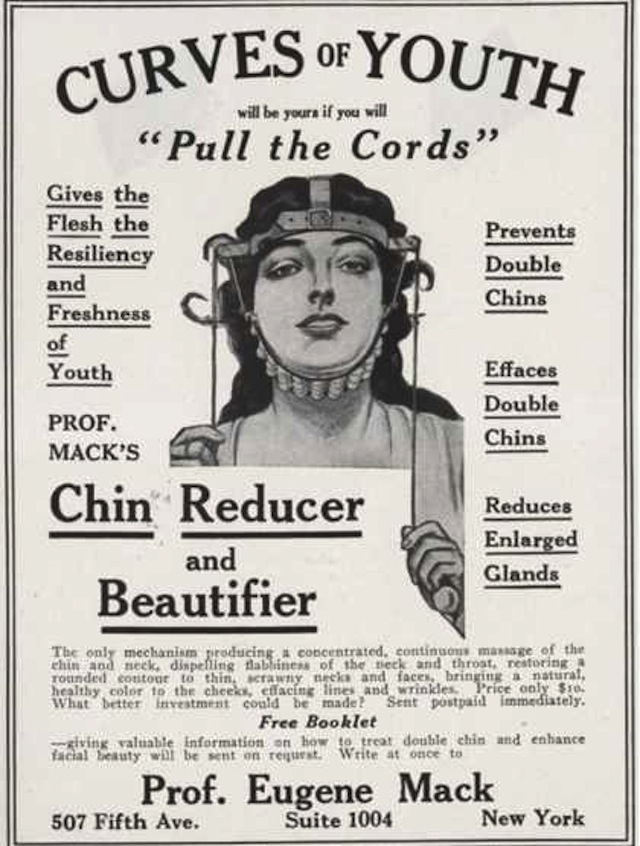
In 1930s ads, “dishpan hands” threatened marriages.
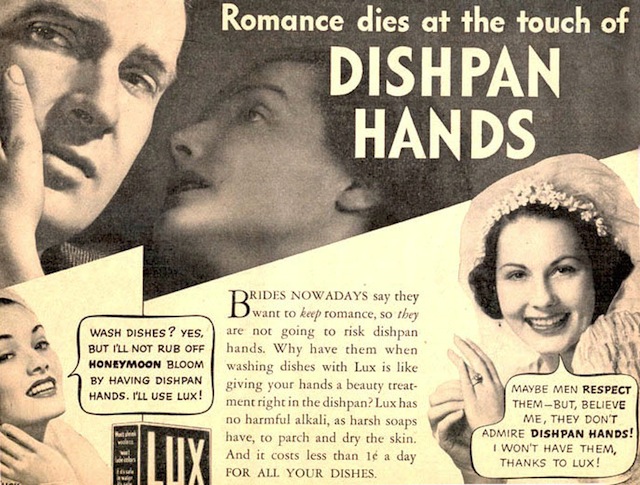
“She’s a girl in a million! Pretty and smart. Dances divinely. Can even cook. But she’s ruining her chances by having ‘gap-osis.’” That is, gaps where her skirt buttons.
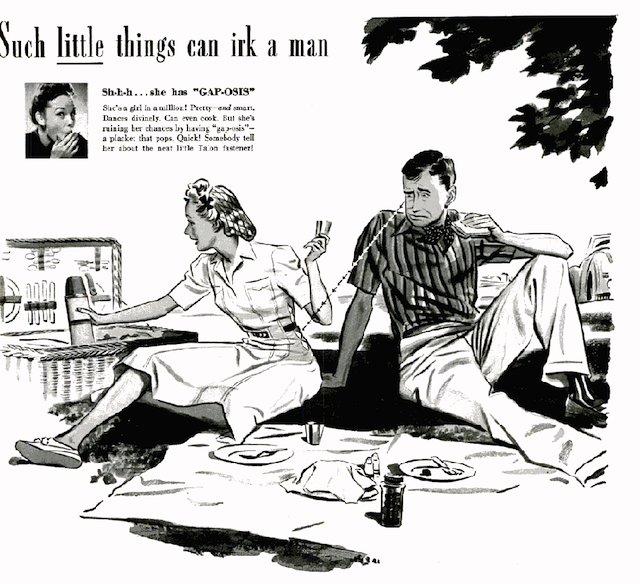
In the 1930s, dancing was an important social activity, and shampoo companies wanted women to worry about yet another way they could smell bad.
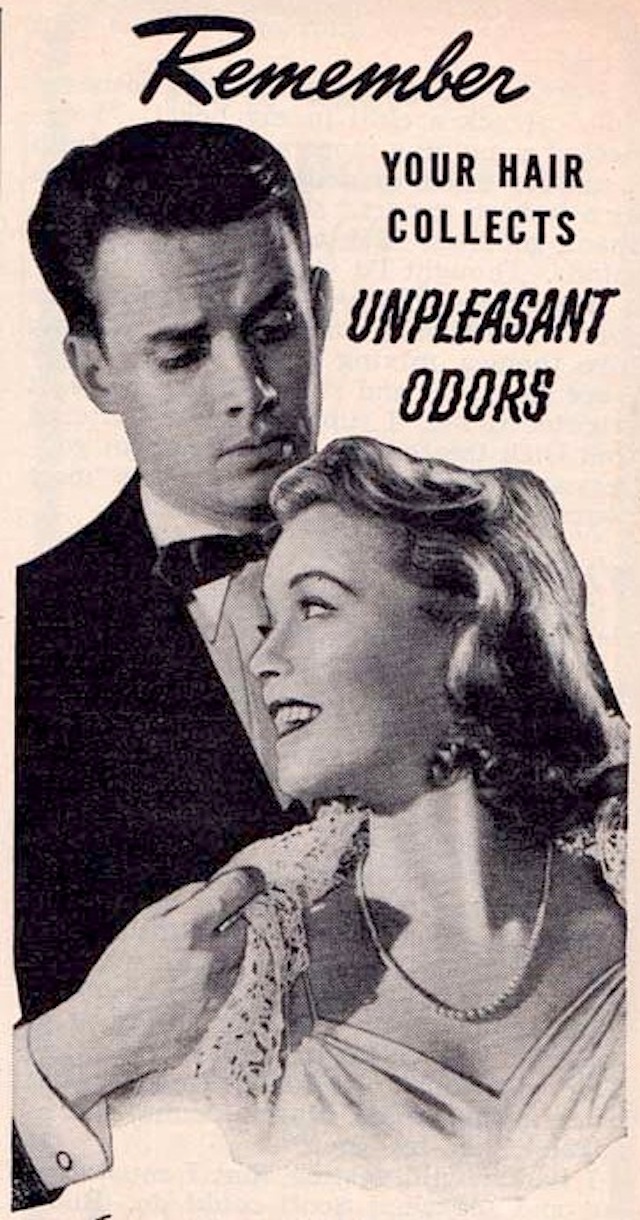
According to Tangee in the 1930s, a woman’s lips could be too red, smeary, glaring, and painted for a man to kiss.
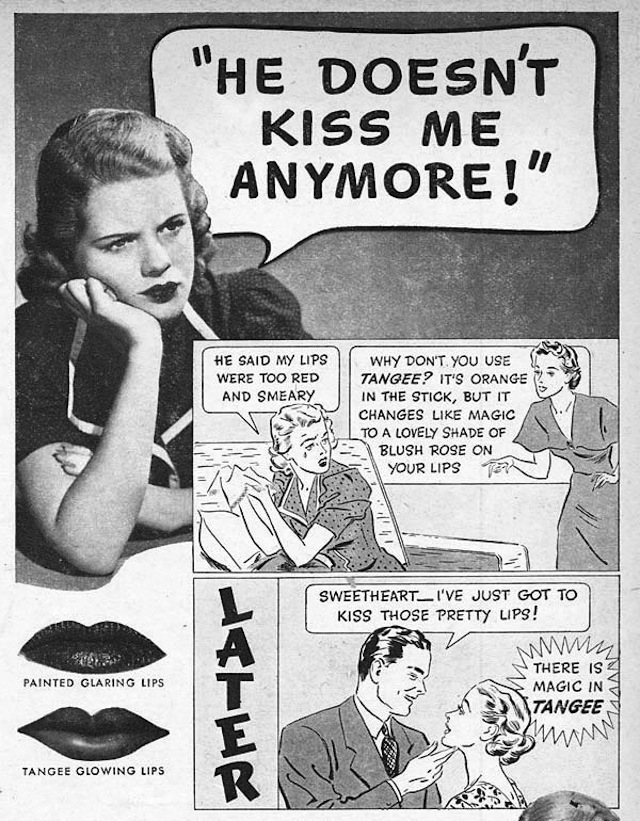
On the surface, this 1930s Lysol ad is about a woman’s vaginal odour. But Lysol was also used as a contraceptive spermicide, which the “organic matter” line alludes to.
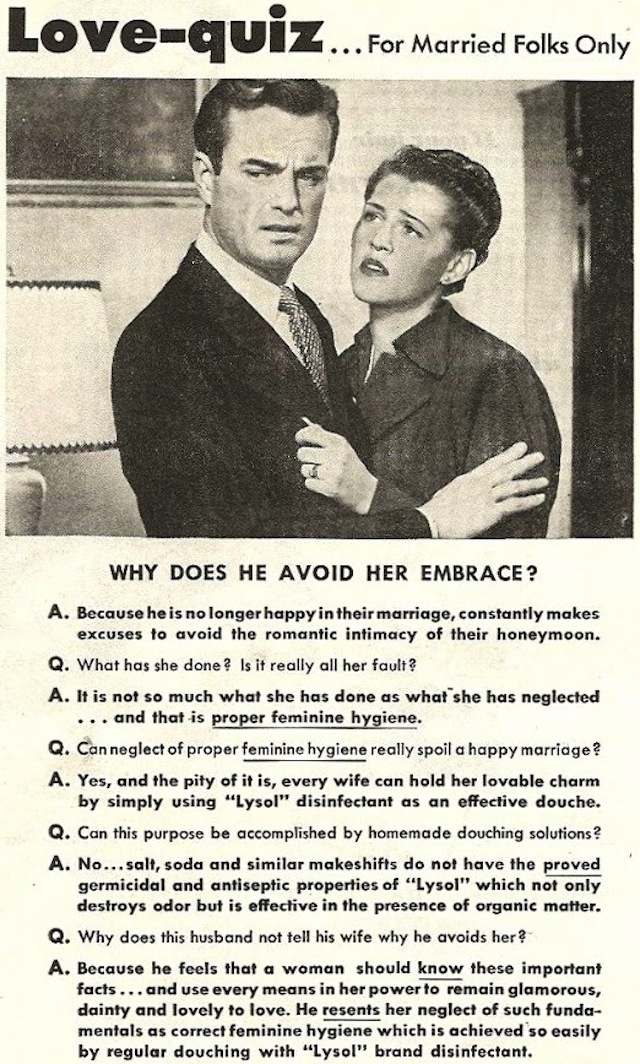
In Lysol ads, failures of “feminine hygiene” led to aloof husbands.
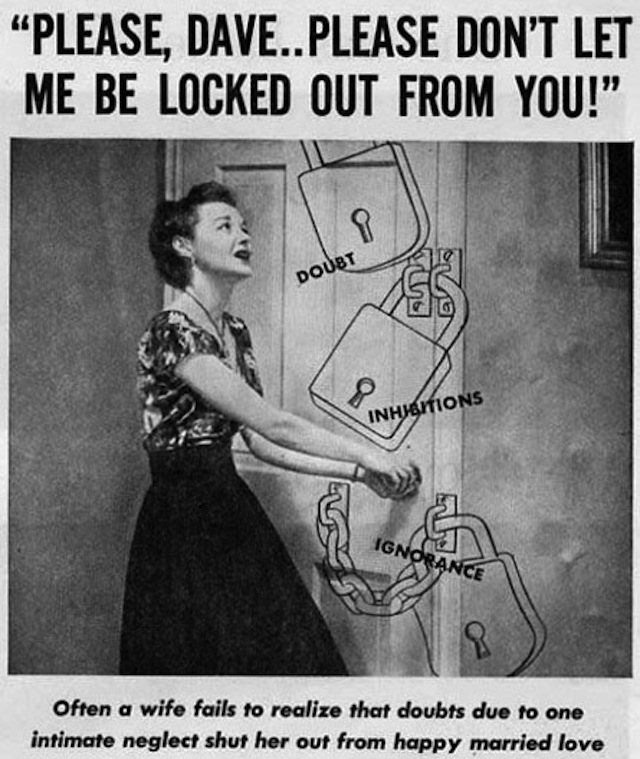
Strangely enough, this 19th century device promised to shrink the bust. Perhaps some breasts were considered too disproportionately large for the Victorians’ hourglass ideal?
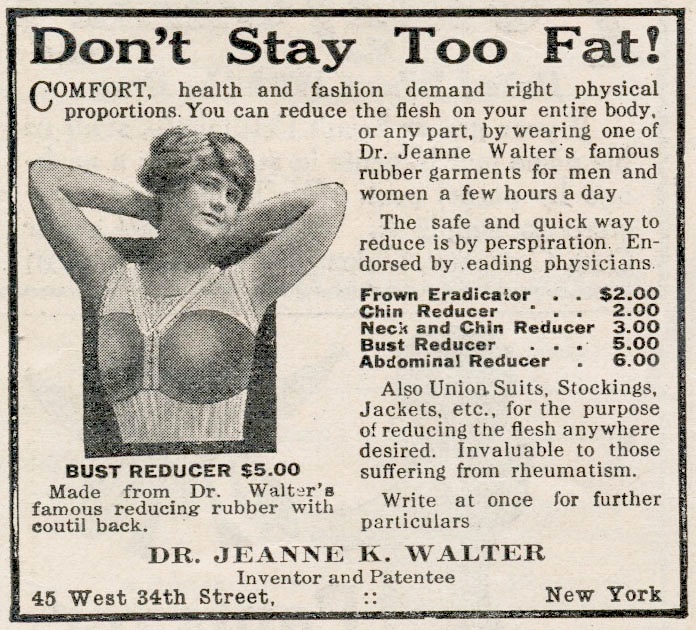
Lysol disinfectant, which was sold as a douche in the ’30s, produced endless ads showing a man leaving his wife over unspeakable “feminine hygiene” problems.
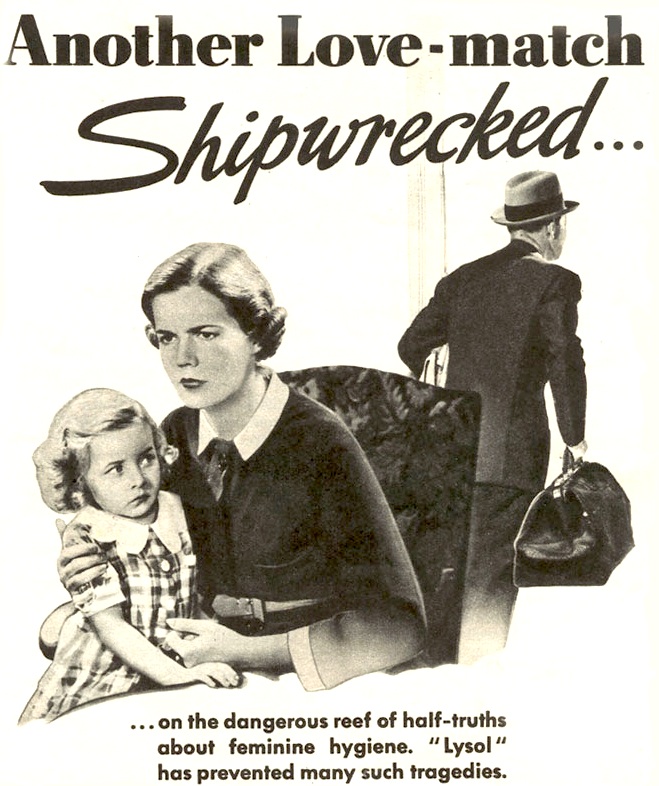
The qualifications for Eastern Airlines stewardesses in the 1970s: “Sure, we want her to be pretty … That’s why we look at her face, her make-up, her complexion, her figure, her weight, her legs, her grooming, her nails, and her hair. But we don’t stop there.”
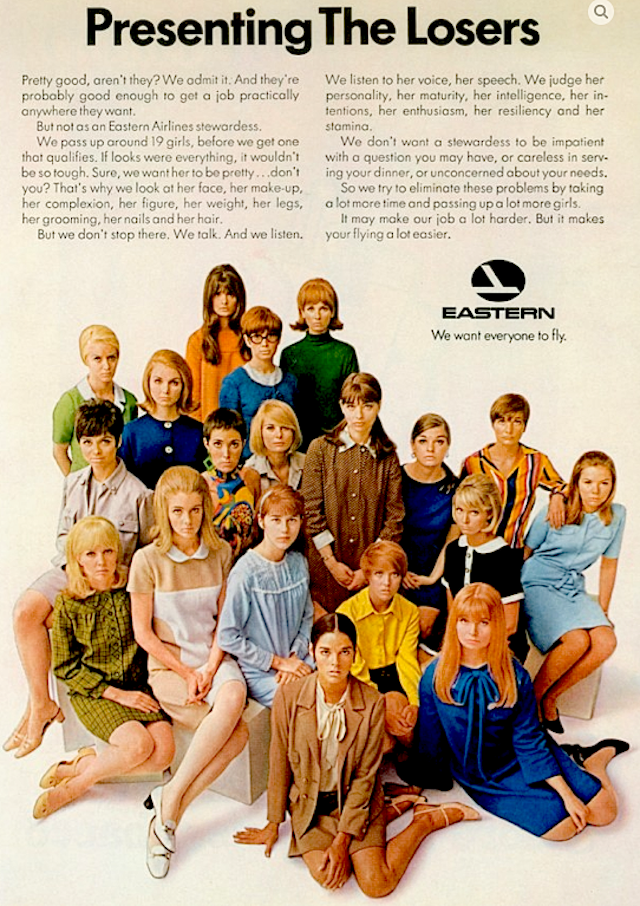
This excerpt has been republished with permission from Collectors Weekly. To read in its entirety, head here. To subscribe to updates from Collectors Weekly, you can like them on Facebook here or follow them on Twitter here.
